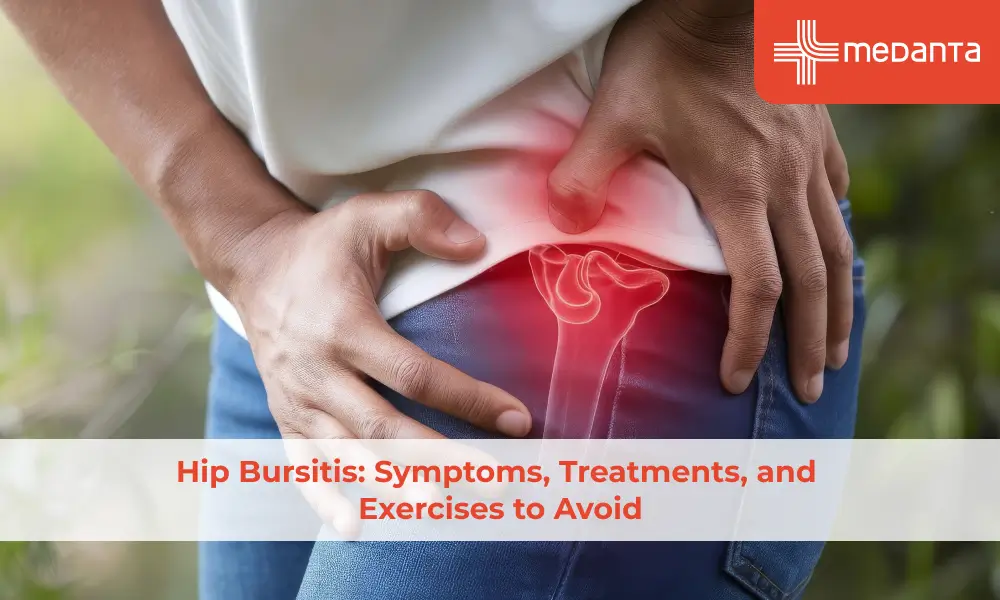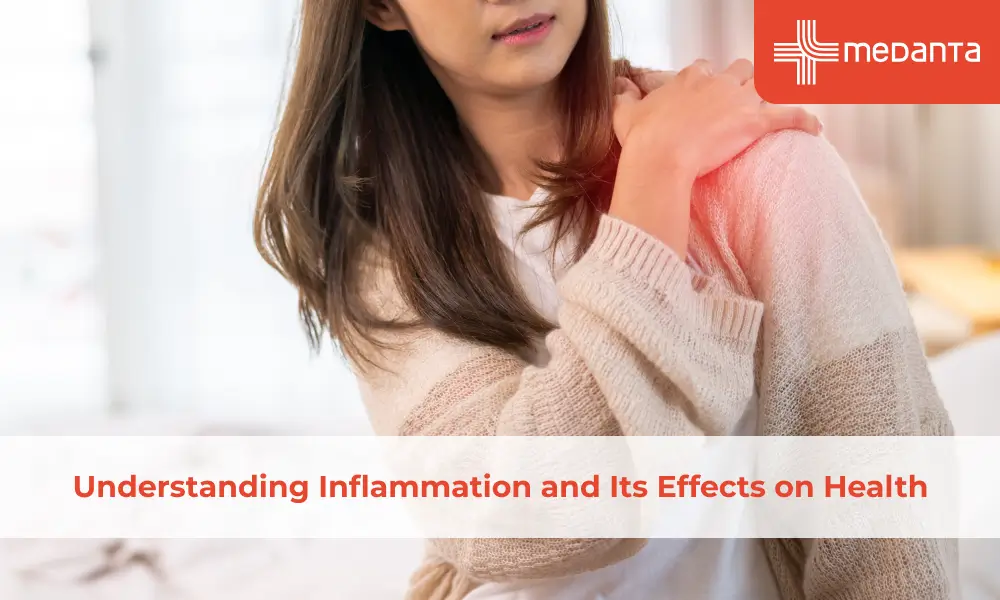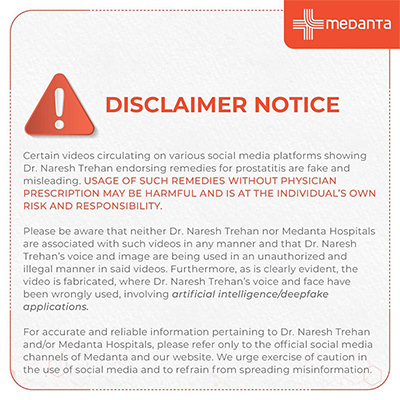Hip Bursitis: Symptoms, Treatments, and Exercises to Avoid

TABLE OF CONTENTS
Hip pain bothers us all at some point in our lives, but did you know hip bursitis can be the cause of it? The crevices around bones and other tissue are cushioned by bursae (the plural form of bursa), and they shield the various bodily structures while acting just like a bubble wrap. Bursae facilitate the smooth movement of tendons, ligaments, and muscles across bone when they function appropriately.
Our hips have two main bursae, and swelling in these bursae, little sacs filled with fluid is known as bursitis. The trochanteric bursa is found on the greater trochanter, the outside end of the hip, and the other bursa, called the iliopsoas bursa, is located inside the hip region. When the bursae swell, the surrounding tissue becomes very sensitive and painful, which are the main signs of hip bursitis!
Remember, it is not just the hip that can have bursitis, the elbows, knees, and shoulder joints may form this condition! Bursitis can be either chronic (lasting a long time) or acute (short-lived), and if you're suffering hip discomfort, it is a must to see a doctor, because hip bursitis needs treatment quickly.
What is Hip Bursitis?
Your femur joins your pelvis at the hip joint, and the little fluid-filled sacs called bursa protect these joints. When the bursa covering your hip joints becomes injured, inflamed, or irritated, it leads to hip bursitis. Usually, after proper resting and receiving hip bursitis treatment for a few weeks or many months, depending on your health, hip bursitis heals.
However, you need to remember, bursitis may be more likely to return (recur) if it was brought on by a repeated action or activity! See your doctor about measures to lessen the strain on your hips, and never disregard hip discomfort because if you put further strain on your hip before visiting a doctor, you run the risk of making the condition worse.
Signs and Symptoms of Hip Bursitis
Hip joint soreness, pain, and discomfort are among the main signs of hip bursitis. Additionally, the afflicted region may be warm to the touch and swollen as well! In the initial days, the discomfort is frequently intense, but later, it could feel achy and dull and could be more noticeable when you get out of bed or a chair. Long periods of sitting and sleeping on the afflicted side may also make the signs of hip bursitis more noticeable to you.
Usually, acute hip bursitis worsens over a few hours or days, and the duration of chronic bursitis ranges from a few days to many weeks. Acute bursitis may disappear and then reappear later if an injury to the hip occurs, and when acute bursitis returns multiple times, it is then leveled as chronic bursitis. The bursae may thicken with time, exacerbating the edema, and this may result in atrophy, weakening of the local muscles, and restricted mobility, so timely hip bursitis treatment is necessary.
Hip Bursitis Treatment
Most hip bursitis treatment methods are simple to do at home and do not need invasive procedures such as surgery. These at-home techniques are described below:
Ice therapy - Every four hours, apply ice packs to your hip for twenty to thirty minutes at a time because cold numbs the region and lessens swelling and inflammation as well as discomfort.
Inflammation drugs - Pain and swelling can be decreased using over-the-counter drugs such as ibuprofen and naproxen, as well as prescription drugs like celecoxib, but make sure to consult your physician before using this therapy for bursitis.
Take rest - You should rest and allow your hip to recover from the pain caused by various daily activities.
Physiotherapy - You may strengthen your muscles and increase your flexibility with physiotherapy from a professional therapist, and usually, hip bursitis can respond well to physical therapy for bursitis.
Assistive devices - To lessen hip strain when walking, use crutches, a walker, or a walking cane if your doctor recommends it.
Visiting the doctor is necessary for other therapies for more intense hip bursitis pain syndrome. Take a look at this type of therapy for bursitis:
Corticosteroid shots - One of the most effective anti-inflammatory drugs is a steroid, like cortisone, and these shots are occasionally used by doctors to lessen discomfort and swelling from hip bursitis.
Shock treatment - A focused device is used to send shock waves through the skin, and after three to four months of treatment, almost two-thirds of patients either get cured or feel significantly better.
Surgery - Surgery is rarely required for hip bursitis, but if the bursa is irreparable, it can be removed through surgical procedures.
Seven Exercises to Avoid with Hip Bursitis
Check out the exercises that must be avoided with hip bursitis:
Bicycling - When cycling, the majority of the weight is immediately placed on the hips due to the posture of the body, and hip bursitis will probably get worse and cause more discomfort as a result.
Side exercises - Hip bursitis will often deteriorate if the body's posture is not maintained straight, and this can happen because of some exercises or just walking or sitting at an angle.
Running - For many people, running exercise is great, but not for someone who has hip bursitis because running puts a lot of strain on the hip. It is definitely not a good idea to do this when the bursa is already inflamed and causing much pain.
Cardio Machines - For optimal exercise on equipment such as treadmills and stair climbers, one must have healthy hips, and every cardio machine has workouts that people with hip bursitis should avoid.
Squats - The hips are also forced to do too much work by these activities, and a deep squat cannot be performed without placing a significant amount of strain on the hips.
Leg Lifts - Both side leg lifts and straight leg lifts place a lot of weight on the hips and need strong hip muscles, and those who have hip bursitis should avoid these.
Prolonged Activities of Any Kind - This involves sitting, lying down, standing, or stretching because the majority of people who have hip bursitis observe that prolonged periods of repeated motion worsen discomfort.
Final Remarks
Although anybody can have hip bursitis, women and those in their middle or senior years are more likely to be affected by this condition. Hip bursitis can be brought on by anything that aggravates or harms the bursa close to your hip joints, and the most typical signs of hip bursitis are pain, discomfort, and swelling around the hip region. Quick treatment, such as physiotherapy, is necessary to stop the condition from getting worse, and that’s why consulting with a doctor is a necessity if you experience hip pain for more than two weeks.
Contact Medanta and get an appointment with a joint specialist to be checked for hip bursitis and start treatment if needed!






